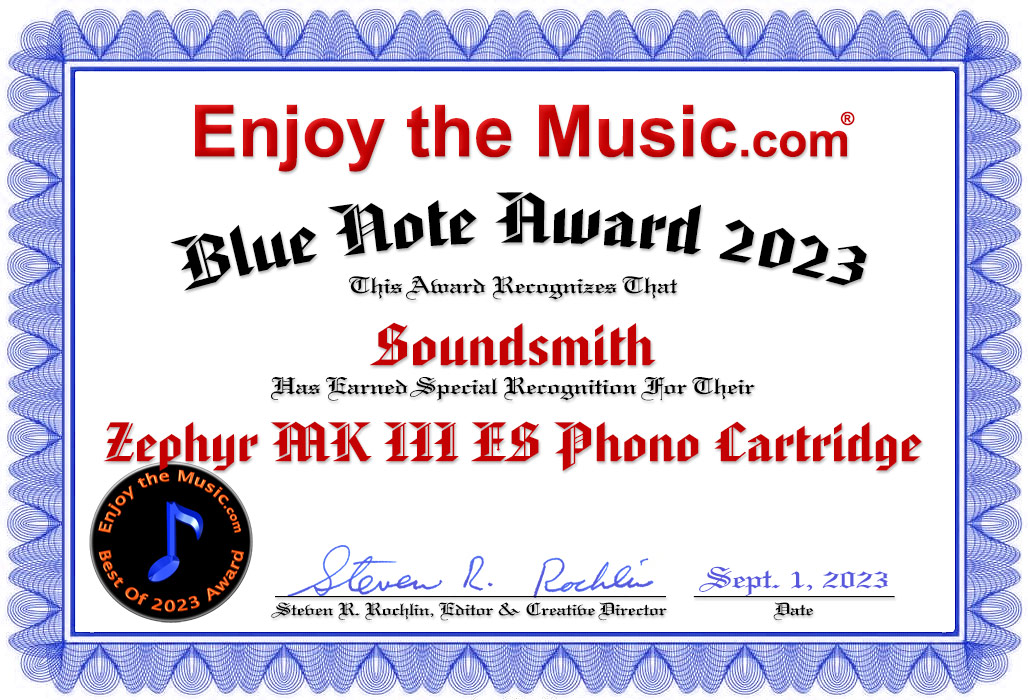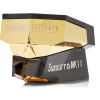How Do I Set The Azimuth Adjustment On My Cartridge?
Azimuth adjustment is important
Azimuth (part 1, part 2)
There are many ways and methods for doing this critical adjustment. We also realize that some arms do not allow for such, so we have some suggestions how one can accomplish this with a non-adjustable arm – at the end of this section.
There are many methods for making this adjustment, some old and some new. New electronic methods for doing this adjustment - the Fozgometer and and The Adjust + systems are available. Soundsmith is developing a new system; the long awaited CartRight alignment device and software, a project that we hope to release soon. I am friends with both of the gentlemen who developed the Fozgometer and Adjust plus, and they work very well. Due to the manner in which they allow this adjustment, they do have limits however, and sometimes do not work well with Soundsmith cartridges. I will explain why, and how to adjust Soundsmith cartridge azimuth without these systems.
The above electronic systems rely on obtaining equal CHANNEL separation - which is a function of azimuth alignment. What is important to understand is that most good cartridges have separation in the range of 25-28 dB. The Ortofon A-90 for example, is spec'd at 28dB. Other designs are 28-32 dB. These types of cartridge designs that have moderate or good channel separation are very common, and because they have separation in these ranges, it is usually somewhat equal when the cartridge is aligned vertically.
Soundsmith cartridges are of a totally different design and technology. This technology often creates designs that have dramatically high levels of separation. The reasons for this tremendous increase in cantilever and stylus control and the resultant increase in definition and resolution are beyond the scope of this article on azimuth. The important thing to be aware of that that when the separation gets very high, or extremely high, it is usually not absolutely equal from channel to channel. For any technology, that would be difficult to impossible at those extremes. Does this indicate a defective cartridge? Absolutely not. Once you are over 30 dB, the cartridge is considered to be excellent in terms of separation. But suppose one channel is 36 dB, and the other is 44db? That happens quite often with a Soundsmith design. The Fozgometer and Adjust plus will advise you to severely tilt the cartridge till you get equal channel separation. We have many Emails to that effect. So what do you do till the Soundsmith CartRight is available?
Always start with the cartridge as physically neutral as possible as viewed from the front. It should be as flat as possible. Your “best setting” is here or not more than 3 degrees from this position, either clockwise or counterclockwise.
To verify the best position, use a test record (Acoustic Sounds test record is fine – Side 1, tracks 2&3) where one channel is modulated at a time, and LISTEN (or measure properly) the OTHER channel for crosstalk or bleed through. Do the same thing vice-versa with the other channel. When the crosstalk, or bleed through is roughly the same, you MAY be close to the azimuth. Many cartridges can be azimuth adjusted in this manner, because the bleed through for each channel will be roughly the same for cartridges that have "OK" levels of channel separation when the azimuth is "neutral". Fine tuning information can be found below.
Again, it is important to note that cartridge alignment devices that rely on equal channel balance and identical channel separation in order to adjust AZIMUTH will not always work to achieve best azimuth adjustment. In fact, some will actually provide a far worse azimuth recommendation than using a mirror, or an equal reflection in the surface of the record while playing as viewed from the front. As a result, there is a caveat with these devices that rely on identical cartridge characteristics. While it is true that if a cartridge with NORMAL separation levels has channel separation asymmetry IS defective (from the standpoint of one channel having far worse separation than the other), it is also quite common - as stated above, with Soundsmith cartridges to have one channel that has far better separation than the other, and that does NOT constitute a defective cartridge. For example, at the extremes of unusually high channel separation, one channel may be 3-8 dB “worse” for separation than the other at the BEST STYLUS MECHANICAL azimuth setting.
These differences do not indicate a defective Soundsmith cartridge, they simply point out how difficult it is to make a cartridge with identical separation performance when one gets to very high levels of separation, which is only found in Soundsmith designs due to the unique technology employed. So - how does one best adjust under this situation?? The technique is described below. As mentioned however, in the near future, a device called the CartRight, available in both hardware and software forms will be available through the Soundsmith. This device will permit accurate adjustments to be performed even by the most novice of audiophiles, and will allow (among other alignments) perfect azimuth adjustment for any and all cartridges - especially those with any asymmetrical performance. ../../html/CartRight/index.html
Regarding azimuth adjustment, the best method for Soundsmith designs (and others) is to set the cartridge NEUTRAL as viewed from the front. Then, adjust the azimuth a VERY SMALL AMOUNT to find IF that improves the separation (less crosstalk) for the WORST channel, where it JUST achieves best separation and to stop there. It may be that you will find that continued adjustment in that direction will NOT result in improvement of separation for that channel. Bear in mind what you are doing here. Crosstalk measurements and other means of electrical measurements DO NOT FIT THE STYLUS BEST INTO THE RECORD GROOVE!!! After all, that is what you SHOULD be going for, NOT the best or equal crosstalk!!!
In other words, if one channel is always much better in terms of less crosstalk than the other, tune the azimuth by using the other channel. Again, the best way to tune the “worst” channel is to find the point where the crosstalk “just” becomes minimized and go no farther. Verify that the other channel is still better in that it has less crosstalk. If you NOW FIND that you have NOT gone more than a tiny bit off the neutral position to do this, you have probably hit the best azimuth compromise.
If you find you are way off neutral, that is wrong, and something else is wrong with your setup.
For arms that do not allow azimuth:
One may cut two fine strips of business card, about a quarter the width of the cartridge, and place them on top of one another, and then on top of the cartridge, running FRONT TO BACK to create a pivot or fulcrum. Then, by alternately slightly tightening and loosening each of the mounting screws a tiny bit each, one may “tilt” or rock the cartridge as viewed from the front to achieve a slight azimuth adjustment, which should be all that is required, to achieve top performance. When the proper point is found, tighten both screws by the same amount to “lock” the setting in place.
Refers to
Hyperion
Paua mk II
The Voice
Zephyr MK III
Boheme
Carmen mk II
Irox Blue
Mezzo
Zephyr MIMC ☆









